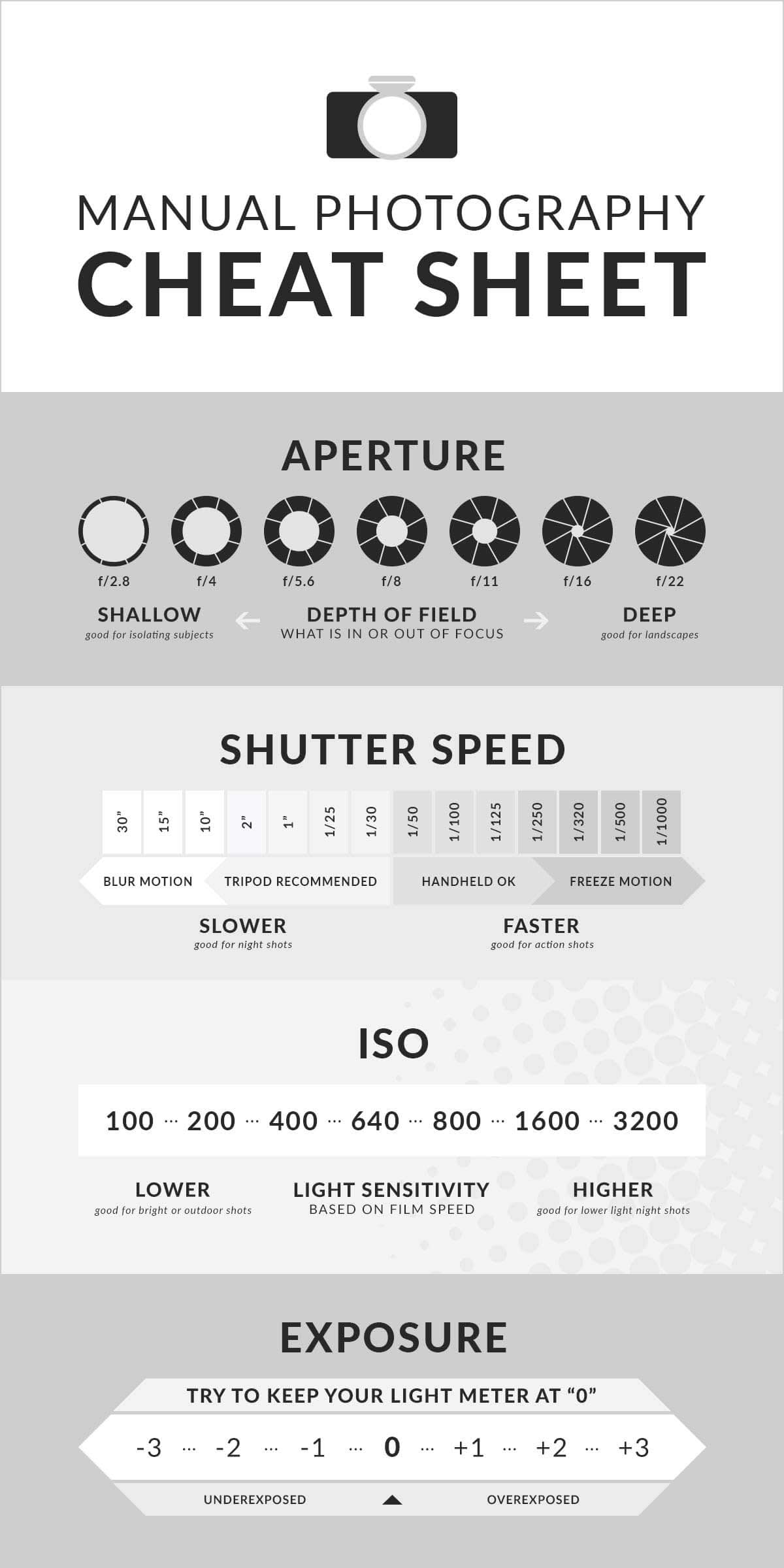Trapeze artists have safety nets. Writers have the backspace button. Even pet food companies have human taste testers. So it makes sense that photographers should have some sort of fail safe, check, or backup as well. Enter the ultimate photography cheat sheet, an assemblage of important information for shutterbugs. Keep it in your back pocket. Or camera bag pocket. Or tape it to your arm and slide your sleeve up to sneak a peek (we won’t tell). Use it however you like, and never worry about forgetting important photography stuff again.

Here’s a breakdown of the info we’ve included:
Aperture
Aperture is all about light, numbers, and the sixth letter of the alphabet. Keeping track of how those things combine can be tricky, especially if you’re new to photography or haven’t had enough coffee. Take a look at the aperture section of this cheat sheet and determine which f stop suits your purpose.
Shutter speed
Is your shutter feeling the need, the need for speed? It better, if you’re after an outstanding action shot. But it should probably go slow if you’re looking for some beautimous motion blurring. To make sure you know just how fast or slow your shutter should go, we’ve included this handy shutter speed section on the cheat sheet.
ISO
Check out the ISO section of this cheat sheet to get an idea of the proper degree of light sensitivity for the setting. ISO settings range depending on the camera, but “normal” is said to be between 200 and 1,600. The lower the number, the less sensitive your camera’s sensor or film will be to light.
Exposure
If you’ve ever seen the exposure triangle, you know that exposure has to do with ISO, shutter speed, and aperture. On this cheat sheet, the exposure section is all about your light meter. Use it to remember whether that + or – in your display means your image will be over or underexposed, and adjust your shutter speed and aperture accordingly.
Editing
As we all know, getting the shot is only the first half. When you're ready to edit, PicMonkey's got all the tools to make your photos even better. Learn more about these photo fixers and project boosters:
